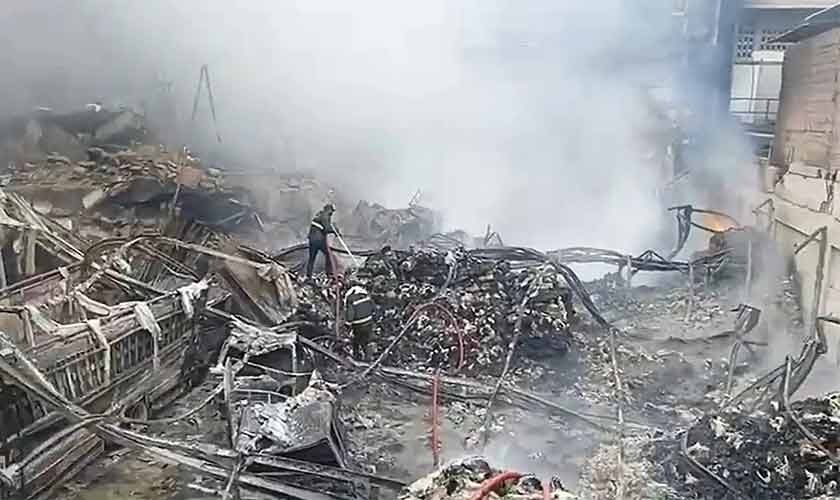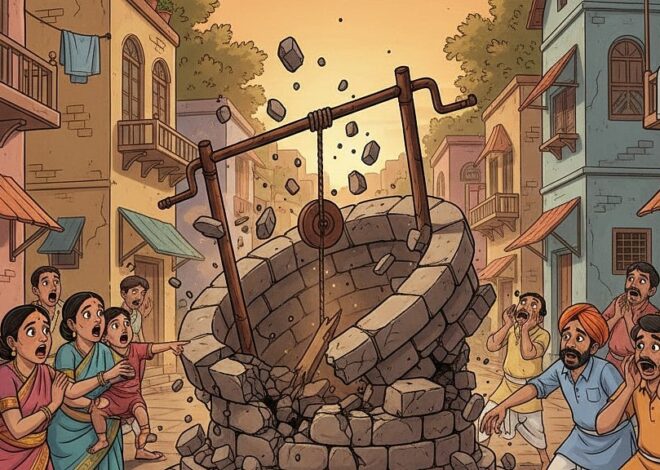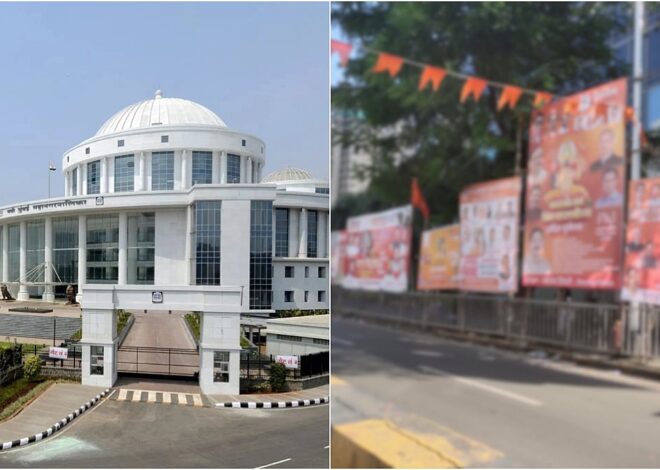
Playing with fire
In recent days, Karachiites have witnessed several tragic incidents of fire breaking out across multiple locations in the city. The biggest of these occurred on September 9, at a garment factory in New Karachi. The fire blazed on for hours, injuring many workers and causing huge financial loss.
Earlier, in late August, at least six people lost their lives in a fire that broke out after an explosion in a warehouse located in a densely populated area near the Taj Medical Complex. The same month, a massive fire erupted in a factory in the Karachi Export Processing Zone near Landhi, injuring eight people and spreading to at least three other factories.
These tragedies have once again raised serious questions about why there is no comprehensive and coordinated strategy to deal with fires in Karachi.
### What Causes Hazardous Fires?
Electrical and plumbing defects in commercial and residential buildings are rarely corrected. Instead of investing in safety measures, owners and management often force employees to continue working despite leakages, sparks in electrical wires, and broken pipelines. Alarmingly, some buildings do not even have legal electricity connections.
Overloading and poor wiring increase the chances of short circuits. Additionally, there are serious flaws in the design and construction of some buildings. Lack of emergency evacuation routes, poor ventilation, and the presence of flammable materials contribute to the loss of human lives.
Garment factories, sewing workshops, warehouses, and oil depots situated in crowded inner-city areas are particularly vulnerable to such risks.
### Safety Systems and Legal Action
According to experts, about 70 percent of residential, commercial, and industrial buildings in Karachi lack adequate fire safety systems. There is a severe shortage of essential equipment, including fire alarms, fire exits, and sprinklers. Residents have not received emergency training, and there have been no public awareness campaigns.
Although the presence of firefighting infrastructure such as standpipes, water tanks, alarm systems, and fire-prevention walls is mandatory under building bylaws, their implementation remains negligible.
Fires frequently break out in buildings across Pakistan due to poor infrastructure, weak enforcement of safety regulations, and widespread negligence. The Fire Protection Association reported that around 3,000 fire incidents occurred in Karachi in 2024 alone. It also highlighted that the Fire Department is under-resourced and lacks an effective strategy.
### Urban Governance Challenges
The pressing question is: why are government agencies unable to take adequate measures to reduce fire risks in residential and commercial areas? Corruption, political and administrative pressure that hinders uniform enforcement of the law, lack of resources, and limited capacity of firefighting agencies all contribute to the problem.
Moreover, the number of fire brigades and their facilities are grossly inadequate given the city’s size and population. This situation worsens with frequent delays in firemen’s arrival and inadequate access to water and equipment.
### Increased Risk Due to Unplanned Development
Experts attribute the rising incidents of fires in warehouses, markets, and stores in Karachi primarily to unplanned development and severe lack of fire safety measures. Most warehouses and commercial centers have been built without formal plans, and essential fire safety features such as water systems for extinguishing fires, fire hydrants, alarms, or ventilation systems are often missing.
The use of poor and highly flammable construction materials allows fires to spread rapidly. Some warehouses, located in crowded and old commercial centers like Empress Market, Bolton Market, and New Karachi, lie along narrow streets inaccessible to fire brigade vehicles. This impedes emergency response and often leads to disastrous fire spread.
Many warehouses and markets are situated near high-tension electricity lines or contain old and faulty wiring. Overloading and short circuits remain the most common causes of fire. These centers store large quantities of clothes, plastics, chemicals, oil, and other flammable materials but lack designated zones or safety protocols. Consequently, a single spark can trigger major explosions or severe fires.
Furthermore, most warehouses and markets lack emergency exits and safe escape routes, making rescue operations more difficult.
### Weak Supervision and Lack of Coordination
Experts point to weak supervision by city administration as a major cause of this dangerous situation. There is a lack of effective coordination between the Building Control Authority, the Department of Industries and Commerce, and the Fire Brigade.
Routine safety audits of buildings are rarely conducted, though they should be standard practice. Deterrence through strict fines and penalties for violations is also critical. Unfortunately, such enforcement is rare, allowing building owners to avoid security investments to cut costs.
### Prevention: A Way Forward
The government must prioritize fire safety measures as a matter of urgency. The first step is collecting accurate data. Statistics and local government departments should jointly conduct regular surveys and safety audits of factories, warehouses, and residential buildings, especially those in old and densely populated areas, to identify defective structures.
Fire alarms and sprinkler systems should be mandatory standards. During construction and renovation, inclusion of safety exits must be strictly enforced.
Institutional and community engagement is vital to improving fire safety. Trade associations, civil society, labor unions, and the media should actively participate in raising awareness and advocating action.
Investing in fire brigades is crucial. Modern fire tenders, advanced equipment, and comprehensive personnel training will enhance the capacity to effectively manage large-scale fire incidents.
Public awareness also plays an important role. Fire safety training should be integrated into schools, colleges, and workplace workshops to educate citizens on preventive measures and emergency response.
### Conclusion
The recent fires in Karachi clearly indicate that the city desperately needs a comprehensive fire safety policy supported by strict legislation and effective enforcement. Without timely and decisive action, the frequency and severity of such tragic incidents are likely to increase in the future.
It is imperative that all stakeholders — government, private sector, and communities — come together to ensure a safer Karachi for everyone.
https://www.thenews.com.pk/tns/detail/1345122-playing-with-fire

